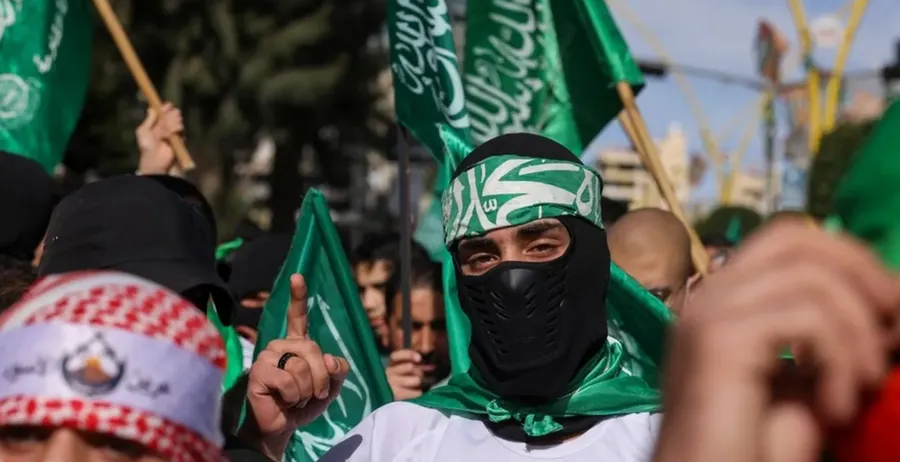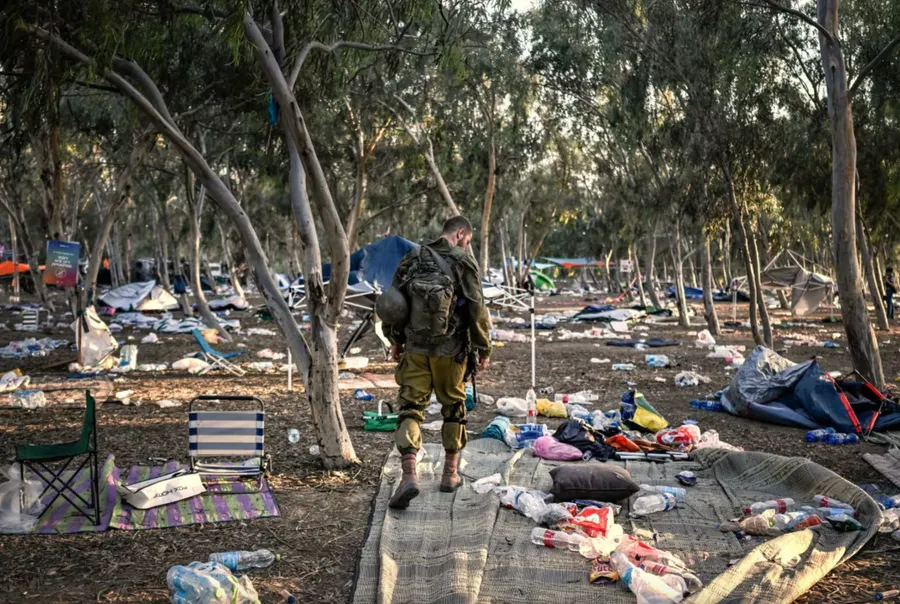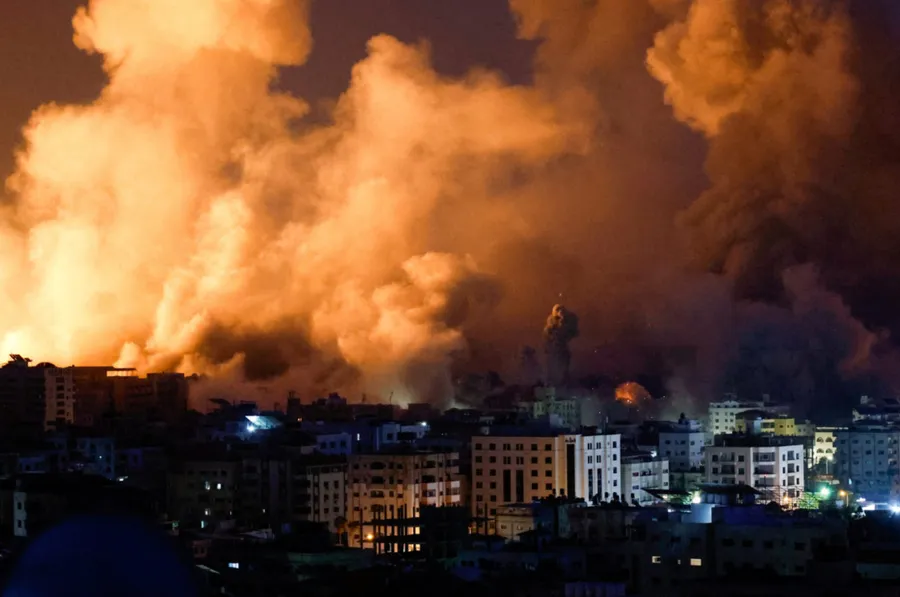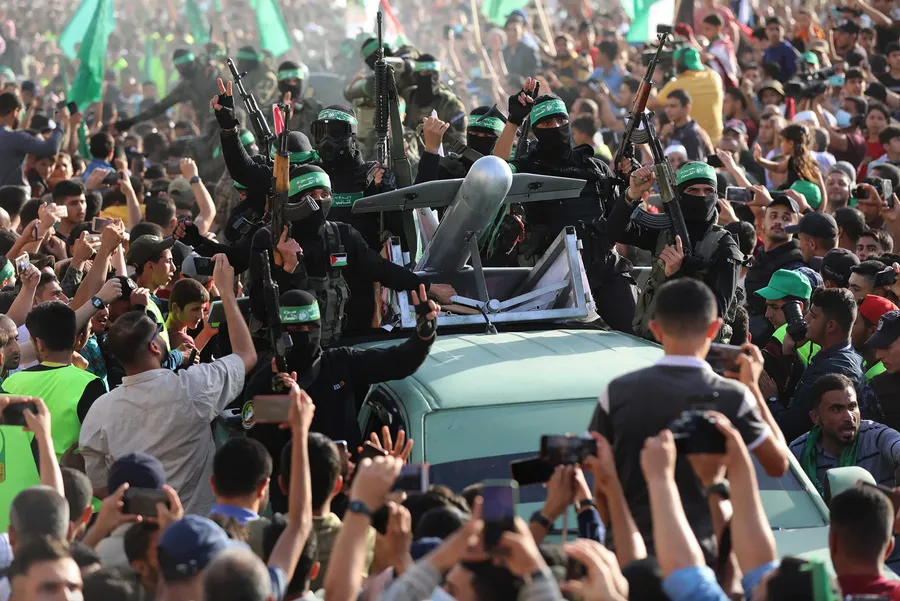
Calculated Chaos: Hamas's War and Strategic Calculation
by u/DemosthenesRex
The October 7th assault by Hamas marked a profound rupture in the strategic equilibrium that had, however tenuously, prevailed between Israel and the Palestinian enclave of Gaza. While the attack’s brutality shocked global audiences, it was neither erratic nor ideologically incoherent. On the contrary, it was the culmination of Hamas’s long-articulated vision of existential resistance, calibrated to reinvigorate its legitimacy within Palestinian society and the broader Arab world. For Hamas, political survival is contingent upon demonstrating that its ideological commitment to armed struggle is not merely rhetorical but actively consequential. The operation's choreography, simultaneously breaching Israeli border defenses, targeting civilians, and broadcasting the spectacle, suggests a calculated bid to transform itself from a besieged actor into the vanguard of a reinvigorated anti-Israel axis.
At its core, Hamas’s strategic calculus appears driven by a dual imperative: to unseat Fatah and the Palestinian Authority as the locus of national leadership, and to reorient the Palestinian cause around maximalist, rejectionist principles. This shift is not new but is part of a doctrinal continuum that has, since the early 2000s, sought to differentiate Hamas from its rivals by portraying compromise as capitulation. The October 7 operation, in this context, was not merely an act of asymmetric warfare but a political offensive aimed at demonstrating that resistance, not diplomacy, remains the only viable path to liberation. Drawing upon frameworks developed by Islamist movements such as Hezbollah and the IRGC, Hamas constructed a spectacle of rupture meant to delegitimize coexistence and galvanize disillusioned Palestinian and Arab publics.
Furthermore, Hamas’s long-term strategic vision hinges on entrenching itself not just as a militant organization but as a permanent revolutionary actor embedded within a larger anti-Zionist and anti-Western geopolitical arc. The attack thus served as a functional escalation designed to provoke a disproportionate Israeli response, thereby generating mass Palestinian suffering that could be rhetorically weaponized in service of radicalization and recruitment. This logic mirrors the martyrdom imbued doctrine of sacrificial politics Hamas has long espoused, in which victory is measured less in territorial gain than in symbolic dominance and the erosion of enemy moral authority. In launching the October 7 assault, Hamas was not only attempting to rupture the existing order but to rewrite the narrative architecture of the conflict on its own ideological terms.
Hamas’s October 7 offensive must be understood not as a spontaneous act of terror, but as a strategic articulation of its long-term ideological and political vision. Founded as an Islamist resistance movement with a foundational commitment to the destruction of Israel and the liberation of all Palestinian territory, Hamas has consistently sought to consolidate its role as both a military force and a political authority. Over the years, the organization’s capacity for governance within Gaza, combined with its resilience in asymmetric conflict, has enabled it to stake a unique claim, not merely as a militant proxy, but as the authentic vanguard of Palestinian nationalism. The October 7 attack was calibrated to reinforce this position, to reaffirm Hamas’s centrality in the Palestinian struggle at a moment when international attention and internal Palestinian politics appeared to be drifting away from its orbit.

An Israeli soldier patrols near the Supernova music festival attack in Be'eri, Israel, on Oct. 12.Aris Messinis / AFP via Getty Images
This move must also be read against the backdrop of Hamas’s rivalry with the Palestinian Authority and its broader challenge to the secular, diplomatic track of Palestinian statehood. For over a decade, the PA’s failures in negotiation and internal legitimacy crises have created a vacuum of leadership, especially among younger Palestinians increasingly disillusioned with Oslo-era promises. Hamas exploited this disillusionment by recentering the narrative of resistance, asserting that only armed struggle could reclaim Palestinian dignity and territorial claims. The scale, symbolism, and sheer audacity of the October 7 operation, targeting military posts and civilian communities alike, were intended not just to provoke Israel, but to delegitimize the PA and to reframe the Palestinian cause in terms of resistance rather than diplomacy.
Equally important is Hamas’s strategic desire to internationalize the conflict by compelling Israel to overreact, thereby activating global outrage, polarizing regional alliances, and mobilizing pan-Islamic support. By executing an attack of unprecedented magnitude and brutality, Hamas ensured that Israel’s retaliation would be just as overwhelming and, likely, just as indiscriminate. Civilian casualties, infrastructural collapse, and humanitarian devastation were not unintended consequences, they were integral to a doctrine in which suffering becomes a vector for political leverage. Through this lens, the war becomes not merely a military campaign but a theater of spectacle and sacrifice, intended to destabilize regional normalization efforts and place the Palestinian question back at the center of international discourse.
Thus, the October 7 assault reflects a convergence of ideological conviction and strategic recalibration. Hamas aimed to disrupt the status quo: to displace Fatah’s diplomatic stagnation, to provoke a disproportionate Israeli response, and to demonstrate that the Palestinian cause, while fragmented, remains combustible. This calculus was grounded in the belief that armed confrontation, not political negotiation, is the only viable path to relevance in a geopolitical environment increasingly indifferent to Palestinian aspirations. While the humanitarian toll has been catastrophic, Hamas appears to have accepted such consequences as the necessary cost of recapturing ideological primacy and disrupting a regional trajectory that threatened to normalize Israel’s presence in the Arab world without resolving its occupation.
It is difficult to accept the premise that Hamas was wholly unprepared for the magnitude of Israel’s military response to the October 7 attacks. The brutality and visibility of the assault, characterized by mass civilian killings, sexual assaults and hostage-taking, made a tempered Israeli reaction politically untenable. Even the most elementary understanding of Israeli military doctrine would have led Hamas leadership to anticipate an overwhelming counteroffensive. What then explains their decision to initiate such a campaign, knowing it would unleash devastation not only upon their fighters but upon Gaza’s already fragile civilian infrastructure?
One explanation is that Hamas subscribes to a martyrdom-driven doctrine in which suffering is not a tactical failure but an ideological and strategic asset. Drawing from theological justifications and decades of Islamist resistance doctrine, Hamas appears to treat mass civilian sacrifice not merely as inevitable collateral damage but as a mechanism for radicalizing sentiment, attracting regional solidarity, and undermining the moral legitimacy of Israeli deterrence. In this framework, the anticipated destruction serves a higher political utility: to cast Israel as a colonizing power incapable of distinguishing between combatants and civilians, thereby eroding its international standing while reinforcing Hamas's identity as the vanguard of unyielding resistance.
Captured documents and statements from Hamas officials corroborate this interpretation. As reported by Israeli intelligence sources and substantiated in briefings from the Meir Amit Terrorism and Intelligence Information Center, Hamas deliberately sought to provoke a sustained war along multiple fronts, including potential second fronts with Hezbollah and escalations in the West Bank. The documents show explicit acknowledgment that their strategy would entail prolonged Israeli occupation, intensified bombing, and widespread civilian casualties. Far from being a deterrent, these consequences were framed as accelerants for the broader objective of keeping Israel in a permanent state of siege, both physically and psychologically, thereby achieving a kind of strategic parity through chaos.
This raises the critical question: was this a miscalculation or a cynical exploitation of Gaza's suffering? While some Western analysts argue that Hamas underestimated the scale of Israeli ground operations or the political durability of Netanyahu’s wartime coalition, the available evidence suggests that Hamas’s leadership deemed these risks tolerable, if not advantageous. Their willingness to gamble with the lives of their own civilians implies a perverse form of strategic rationality. One in which the optics of victimhood, the disruption of regional diplomacy, and the perpetuation of militant legitimacy are deemed worth the human cost. In this light, Hamas’s decision appears not as a failed gamble but as an ideologically coherent, if morally catastrophic, bet on the enduring power of sacrificial politics.
The strategic architecture underpinning Hamas’s attack cannot be adequately understood without examining the transnational network in which it is embedded, namely the Iranian-led “axis of resistance.” Iran has long cultivated Hamas as a proxy actor capable of exerting asymmetric pressure on Israel, particularly in moments of geopolitical volatility. Evidence suggests that Tehran played a role in at least supporting the ideological and logistical environment necessary for the attack, if not participating directly in its operational planning. This support likely included financial assistance, training, and the provision of dual-use technologies such as drone systems and encryption tools. In this framework, Hamas serves not merely as a Palestinian nationalist group but as a regional pressure valve for Iran’s broader strategy of encircling Israel and undermining Western-aligned regimes.
Hezbollah’s involvement, although more indirect, is no less significant. Long regarded as the premier non-state actor in the region, Hezbollah has provided Hamas with an operational blueprint for hybrid warfare and political survival under siege conditions. The observed congruence between Hamas’s October 7 tactics, complex raids, information warfare, and attempts at territorial disruption, and Hezbollah’s prior campaigns in southern Lebanon suggests a degree of doctrinal convergence. Reports indicate ongoing coordination between the two groups through liaison offices in Beirut and shared intelligence facilitated by Iranian intermediaries. More significantly, Hezbollah’s engagement on Israel’s northern front following the October 7 assault, aggressive but bounded, demonstrates a synchronized regional strategy: to stretch Israeli military resources while avoiding full-scale escalation.
Iran’s motivations are multifaceted. First, it seeks to demonstrate its capacity to destabilize Israel without inviting direct confrontation. By cultivating Hamas and Hezbollah as quasi-autonomous actors, Iran exercises strategic ambiguity. It can shape regional events without bearing overt responsibility. Second, the attack helped to derail normalization talks between Israel and key Arab states such as Saudi Arabia, a diplomatic initiative that Tehran viewed as existentially threatening. Reports indicate that Iranian officials viewed the Abraham Accords not only as a threat to Palestinian sovereignty but as a geopolitical encirclement of Iran itself. By enabling Hamas to disrupt these alignments, Iran repositioned itself as the primary axis around which resistance to Israel and Western influence might orbit.
The October 7 operation marked a fundamental departure from Hamas’s historically asymmetrical warfare paradigm. Whereas previous engagements favored attritional rocket fire, localized ambushes, and cross-border raids designed for short-term disruption and symbolic defiance, the unprecedented scale and brutality of the October 7 assault indicate a doctrinal pivot toward more direct, theater-level confrontation. The coordinated infiltration of Israeli territory by hundreds of militants, combined with the mass hostage-taking and indiscriminate killings, was not merely intended to sow chaos, it reflected an ambition to redefine the spatial and psychological dimensions of the battlefield itself. This operation was not calibrated to escape detection or minimize Israeli retaliation but to impose a new form of strategic calculus that compels Israel to engage Hamas as a quasi-conventional adversary.

Flames and smoke billow during Israeli strikes in Gaza, October 9, 2023. Photo by Mohammed Salem/REUTERS
This doctrinal evolution, while seemingly irrational when measured against the predictable devastation it would provoke, may instead be interpreted as a calculated escalation aimed at shifting the operational environment in Hamas’s favor. By dragging Israel into a protracted and high-intensity campaign in dense urban terrain, Hamas effectively reintroduces Gaza as a center of strategic friction, paralleling Hezbollah’s deterrence-by-entrenchment model in southern Lebanon. Analysts from the Institute for the Study of War and War on the Rocks have noted that Hamas has adopted hybrid warfare principles, embedding fighters within civilian infrastructure and leveraging tunnels, command nodes, and redundant communication systems that complicate Israeli targeting while amplifying civilian tolls. The tactical objective is less battlefield parity than to maximize Israeli strategic overreach and international condemnation.
Underlying this doctrinal shift is a belief that Hamas’s survival does not depend on preserving physical assets or territorial control but on reasserting its ideological and symbolic primacy. The October 7 attack, despite its catastrophic aftermath, allowed Hamas to reaffirm its centrality within the Palestinian struggle and assert a radical alternative to the stagnant diplomacy of the Palestinian Authority. This reversion to total confrontation signals that Hamas is less interested in incremental political gains than in restoring resistance as the dominant political idiom of Palestinian nationalism. In this sense, the group's military doctrine is inseparable from its political theology that confrontation is not merely a means to power but a form of praxis, through which legitimacy and divine mandate converge.
Moreover, the implications of this shift extend beyond Gaza’s borders. Regional actors and intelligence assessments increasingly interpret Hamas’s operational posture as a rehearsal for broader, multi-front confrontation scenarios. Should Hezbollah or Iranian-backed militias adopt similar mass incursion strategies, possibly synchronized across theaters, Israel would face simultaneous asymmetric and conventional threats in the north, south, and potentially the West Bank. Thus, Hamas’s actions must be read not simply as reckless provocation but as the opening move in a deeper strategic campaign designed to reconfigure deterrence structures across the Levant. The shift from asymmetric containment to large-scale, sacrificial confrontation signifies not an abandonment of strategy, but its radicalization.
One of the most consequential yet underexplored strategic dimensions of the October 7 attack lies in its apparent intent to undermine the momentum of Arab-Israeli normalization, particularly the nascent dialogue between Israel and Saudi Arabia. For Hamas, whose ideological foundation is anchored in perpetual resistance to the existence of Israel, the Abraham Accords represented not merely a diplomatic realignment but an existential delegitimization of its raison d'être. By executing an unprecedentedly violent operation that compelled Israel into a protracted military campaign, Hamas sought to reorient regional attention away from normalization and back toward the unresolved Palestinian question. In this sense, the attack functioned not only as a military engagement but as a geopolitical veto, a disruptive intervention aimed at arresting the acceleration of Arab-Israeli détente.
This strategic logic becomes clearer when one considers the layered reactions from Arab capitals. While official statements from Gulf states such as the UAE and Bahrain initially emphasized restraint and humanitarian concerns, the sustained intensity of Israel’s military response, particularly the images of civilian devastation in Gaza, reignited popular sentiment across the Arab world. In Saudi Arabia, normalization talks that once appeared imminent were immediately frozen, with Riyadh recalibrating its position to distance itself from Washington and Tel Aviv without fully abandoning its long-term interests. For Hamas, this shift represents a calculated win: not in terms of territorial gain or tactical survival, but in its ability to fracture the illusion of consensus around Israel’s regional integration and to reinsert the Palestinian issue into the strategic calculus of Arab regimes that had sought to sideline it.
The broader implications for U.S. foreign policy and regional security architecture are significant. The Trump administration, which had pursued normalization as a stabilizing pillar for the Middle East, now finds itself navigating a geopolitical landscape radically altered by the October 7 attacks. Hamas’s intervention, though militarily self-destructive in many respects, succeeded in rupturing a diplomatic trajectory that could have consolidated a U.S.-aligned bloc from the Gulf to the Levant. The attack thus challenges the premise that economic incentives and security guarantees alone can produce sustainable alignment among states whose populations remain deeply sympathetic to the Palestinian cause. In doing so, Hamas revealed the fragility of normalization absent conflict resolution, and the enduring potency of violence as a political instrument capable of rewriting diplomatic priorities.
The October 7 attack must be understood not as a discrete tactical assault but as the operational articulation of a broader strategic vision embedded within Hamas’s long standing ideological and geopolitical agenda. This was not a moment of uncalculated fury; it was a high-stakes gamble, an attempt to redefine the Palestinian question through the deliberate escalation of violence. Hamas sought to rupture the status quo, which had been characterized by its political marginalization, the expanding normalization of Arab states with Israel, and its competition with the Palestinian Authority. October 7, therefore, was intended as a political punctuation mark: a blood-soaked declaration that Hamas, not Ramallah or Jerusalem, would set the terms of resistance, and that quiet diplomacy could no longer proceed unimpeded.

A parade for the Izz ad-Din al-Qassam Brigades, Hamas’s militant arm, is held in Gaza. Ashraf Amra/Anadolu Agency/Getty Images
Yet the efficacy of that strategy remains deeply contested. Hamas may have succeeded in triggering a full-scale war and placing itself at the center of the international conversation, but at what cost? The unparalleled scale of Israeli retaliation has devastated Gaza’s infrastructure, civilian population, and social cohesion. The Palestinian movement is once again fractured between symbolic martyrdom and political paralysis, and the very people Hamas claims to defend have borne the brunt of its provocation. As some have argued, Hamas’s leadership may have overestimated its ability to survive the conflagration it ignited, suggesting a strategic logic that is as reckless as it is revolutionary.
Nevertheless, to reduce Hamas’s actions to mere nihilism or fanaticism would be to miss the evolving contours of its doctrinal thinking. As detailed, Hamas appears to be transitioning from classical insurgent tactics toward a hybrid model of confrontation more reminiscent of Hezbollah’s operational playbook. This transformation suggests an ambition not merely to destabilize but to institutionalize resistance, to normalize a permanent state of war as a mechanism for political relevance. In this view, martyrdom is not the tragic endpoint but the engine of strategic continuity, sustaining a perpetual conflict that defers final resolution indefinitely.
Ultimately, the October 7 operation was a dual act of assertion and sabotage, meant to recalibrate Hamas’s position vis-à-vis Israel, the Palestinian Authority, and the broader Arab world. It was a bet that the international system, fractured and fatigued, would be unable to formulate a coherent response, and that the raw spectacle of violence could rewrite the rules of engagement. Whether this calculus will yield long-term gains or catastrophic failure is still uncertain. What is clear, however, is that the war has irreversibly altered the strategic landscape, and any future resolution to the Israeli-Palestinian conflict will have to contend with the doctrinal audacity and political consequences of Hamas’s gamble.